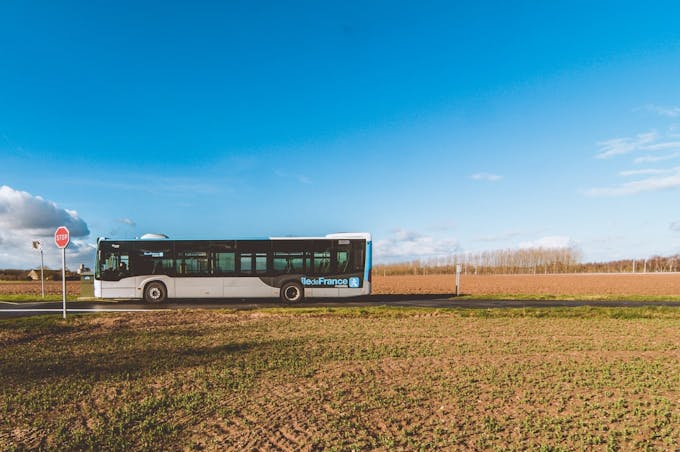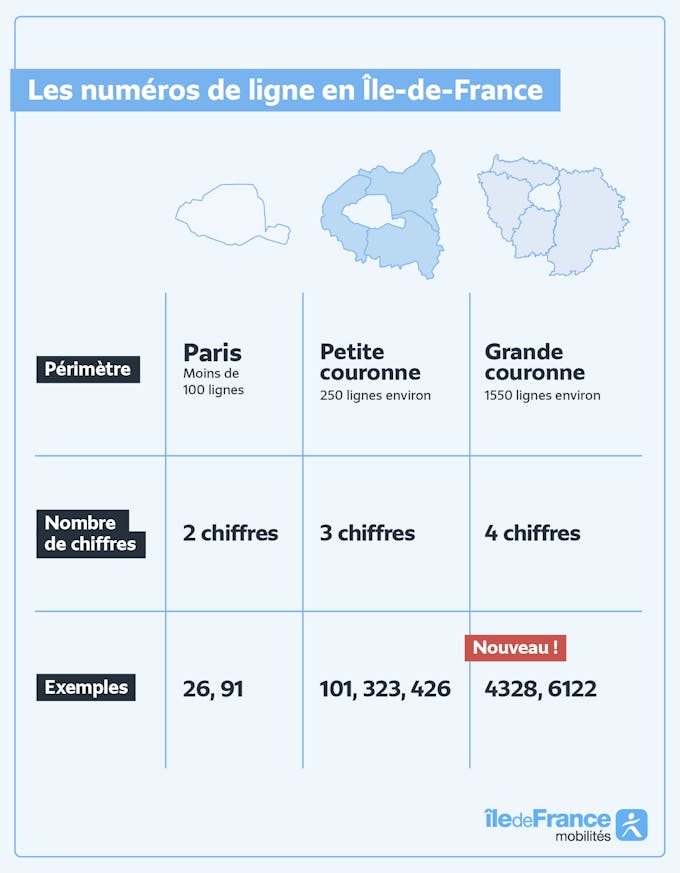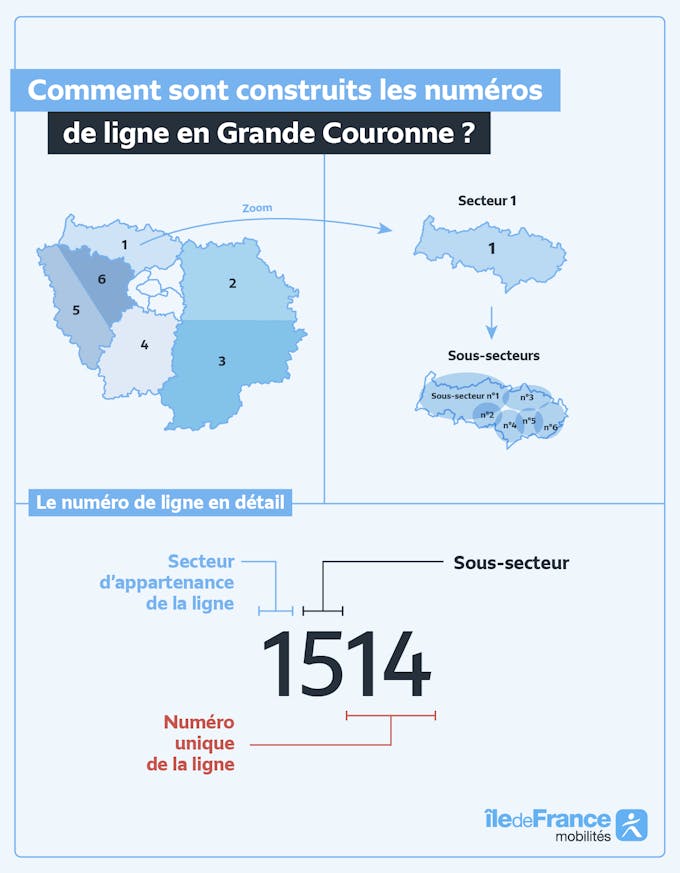A new regional numbering for the Île-de-France bus network

The Ile-de-France bus network is made up of about 1,900 lines. Lines whose numbering systems coexist, but do not resemble each other with very different names (1, TEx, 340, 95-02, 11L) and duplicates in line numbers (there are 19 lines 2 on the current bus network) which complicate the understanding of the network.
In order to facilitate traffic on the network, the understanding of passengers, the operation of route calculation applications and in particular to consolidate the project to build a single and global public transport network on a regional scale, the primary ambition of Île-de-France Mobilités, a new single numbering system will be deployed in Île-de-France.
New regional numbering system for bus lines in the Paris region: how does it work?

Line numbers in Île-de-France
Scope: Paris (less than 100 lines) / Number of digits: 2 digits / Examples: 26, 91
Scope: Inner suburbs (about 250 lines) / Number of digits: 3 digits / Examples: 101, 323, 426
Perimeter: Grande couronne (approximately 1550 lines) / Number of digits: 4 digits / Examples: (new!) 4328, 6122
The new regional numbering index is composed of a different number of digits depending on where the line is running :
- 2 digits for Paris - example: 26 or 91
- 3 digits for the inner suburbs - example: 101, 323 or 426
- 4 digits for the outer suburbs - example: 4328 or 6122
The numbering of local lines in Paris and the inner suburbs is, for the most part, in accordance with this rule. The biggest change will therefore be made to the names of local bus lines in the Grande Couronne, whose names were very disparate.
Regional numbering of bus lines: a division into 6 sectors and sub-sectors
To make it easier to understand, the outer suburbs, which have more than 1,550 lines, have been divided into 6 main sectors, which are themselves divided into several sub-sectors (see infographic below):
- Sector numbered 1 : Val-d'Oise (95)
- Sector numbered 2 : north of Seine-et-Marne (77)
- Sector numbered 3 : south of Seine-et-Marne (77)
- Sector numbered 4 : Essonne (91)
- Sector numbered 5 : west of Yvelines (78)
- Sector numbered 6 : east of Yvelines (78)

How are line numbers constructed in the outer suburbs?
1 sector (example "1") associated with sub-sectors (examples: 1, 2, 3, 4, 5, 6...)
1514: a line number in detail:
1 = line sector
5 = subsector
14 = unique number of the line
Reading a bus route number with the new area numbering system
Let's take the example of line 1514 :
- 1,514: the first figure is determined by the sector of the outer suburbs served. Here is Val-d'Oise (95).
- 1514: the second digit is determined by the subsector. Each sector has several sub-sectors (a maximum of 7). Here, the line serves sub-sector 5 (Vallée de Montmorency) of sector 1 (Val-d'Oise).
- 1514 : The last two digits represent the unique number of the line, which will remain, as far as possible, that of the old line number.
The rollout of the new area numbering system has begun
The new numbering system has been deployed since the summer of 2023 in the first territories.
Today, 7 sub-sectors are already equipped: Montmorency Valley, Provinois Brie et Seine, Essonne Sud-Ouest, Grand Melun, Velizy Vallées, Grand Versailles and Bièvre. The roll-out will extend to the entire outer suburbs by the end of 2025.
To allow passengers to adapt to the new numbering, the old and new line numbers will be displayed simultaneously on the Île-de-France Mobilités application and the timetables.
A detailed article on each sub-sector will be available on the news pages of the Île-de-France Mobilités website.